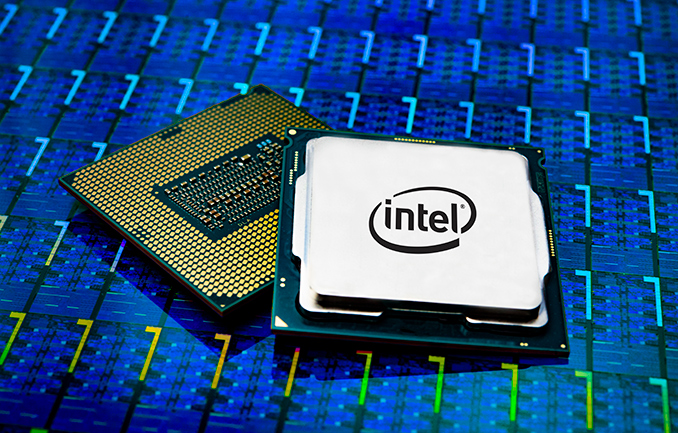Intel Prevails in Ongoing Legal Fight Against VLSI With Appeal Board Victory
by Anton Shilov on June 15, 2023 8:15 AM EST
In the ongoing legal battle between Intel and VLSI that started years ago and with billions at stake, Intel seems to be prevailing. The U.S. Patent Trial and Appeal Board (PTAB) has recently invalidated two VLSI-owned patents 'worth' a total of $2.1 billion, while another major dispute potentially 'worth' $4.1 billion for Intel was dissolved late last year.
The litigation between Intel and VLSI is multifaceted to say the least, involving numerous cases across various U.S. and international courts. The sum that Intel would have to pay should it lose in courts would be in the billions of dollars, as VLSI contended that Intel infringed on 19 of the patents it owns and which originated from IP filed by Freescale, SigmaTel, and NXP. While a number of these allegations have ruled on in some fashion, either against Intel, dismissed by court juries, or had the involved patents revoked, there are still some allegations that are awaiting a ruling.
But let's start from the latest developments.
Back in May the PTAB invalidated frequency management patent ('759') finding it 'unpatentable as obvious,' this month the same board found that another patent — the memory voltage reduction method patent ('373') — in the $2.1 billion case was 'unpatentable.' The two patents were originally issued to SigmaTel and Freescale. These verdicts by the PTAB could potentially exempt Intel from making payments to VLSI for allegedly violating its 759 and 373 patents. On the flip side, VLSI retains the option to challenge these PTAB rulings at the U.S. Court of Appeals for the Federal Circuit.
"We find [Intel] has demonstrated by a preponderance of evidence that the challenged claims are unpatentable," a ruling by the U.S. Patent Trial and Appeal Board reads.
Two years ago, a local judge in Waco, Texas, ruled in VLSI's favor and determined Intel owed $2.18 billion in damages for infringing two patents. One was a frequency management patent developed by SigmaTel, which was assigned $1.5 billion, and the other a memory voltage reduction technique created by Freescale, accounting for $675 million. Intel made an unsuccessful attempt to overturn this ruling in August 2021, which led them to seek the PTAB's ruling to void both patents.
Intel and VLSI previously agreed to resolve the Delaware-based portion of their $4 billion patent dispute late last year. Meanwhile in a separate Texas case, a jury ruled that Intel owed VLSI nearly $949 million for infringing its 7,242,552 patent. This particular patent details a technique meant to alleviate problems arising from pressure applied on bond pads.
Although the legal war does not look to be over yet, Intel seems to be gaining the upper hand in its legal battles with VLSI.










7 Comments
View All Comments
cyrusfox - Thursday, June 15, 2023 - link
Biggest issue I have with patent economic warfare is the barrier of entry these patent warchest and fighting prevent from any startup or others to enter the fray. Whether valid patent enforcement or not, you need to set aside many $million in legal fees just to navigate these shark infested waters.I also find it odd the new ARM investment by Intel (Anchor investment $10 billion to IPO), while Arm is also a subsidiary of Softbank. Makes one wonder if there are any under the table agreements in terms of cooperation and investment between these giants.
Samus - Thursday, June 15, 2023 - link
The biggest issue I have with patent economic warfare is them being fought in bias Texas and Delaware courtrooms.andychow - Tuesday, June 27, 2023 - link
Patents can protect startups, without them startups would just get crushed by reverse engineering from big players. It also is an incentive for large corporations to keep innovating.Let's not forget patents completely expire after 20 years. While that sounds like an eternity, it's not. x86_64 for example is expired. Anyone in the world can now make chips with those instructions (the initial release). This forces Intel and AMD to come up with new instructions (like AVX), lest they face competition from everyone.
Bruzzone - Friday, June 16, 2023 - link
There are a lot of problems in relation INTC and the State and Federal court system; 28 USC 455 bias and prejudice, FRCP 60(b)(3) extrinsic frauds, extrajudicial and political interference, Canon issues, bar fraternal on whoever's take.Specific ARM and Intel, ARM does this well knowledge of every fabricator's process to sustain availability of PDKs across the ecosystem all process lithography nodes and variants that support primarily foundries and customers; time to design process validation, design verification, yield, volume manufacturability meeting end product time to market requirement. ARM availability on various Intel processes is what ARM does for every foundry. Intel owning a chunk of ARM is something else and no different from any end customer owning ARM because foundries are their own unique ARM customer set. Intel should not take ownership in ARM just like all foundries are that neutral state.
Mike Bruzzone, Camp Marketing
Eliadbu - Saturday, June 17, 2023 - link
What does it has to do with litigation between Intel and VLSI?meacupla - Sunday, June 18, 2023 - link
I think you are talking to a chatgpt based bot that is being tested out on anandtech to see if it will get caught or not.Bruzzone - Monday, June 19, 2023 - link
"What does it has to do with litigation between Intel and VLSI?" The tech litigation environment generally is shady on all sides. Its associate networks warring with associate networks. mb